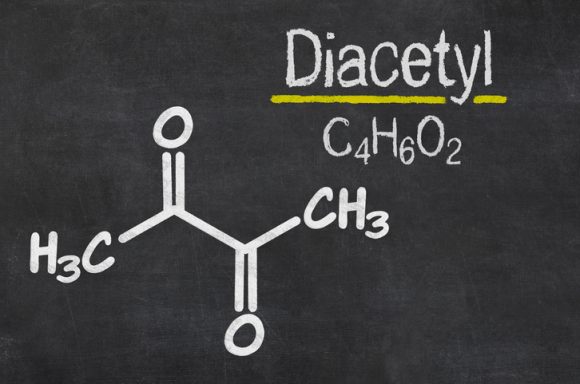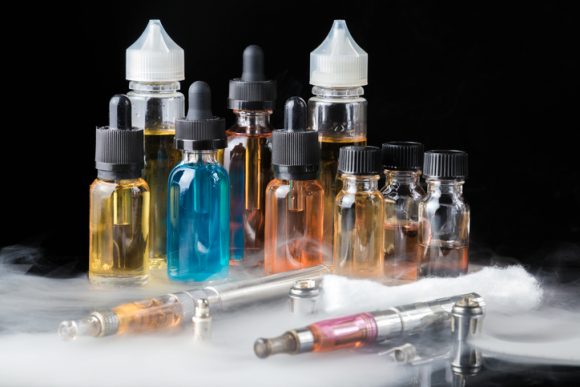Popcorn Lung might sound like a funny name or even a joke. However, the airway scarring, inflammation, and lung damage this lung disease brings are not fun.
Popcorn Lung: Peculiar Name for a Miserable Condition

Searching for the Causes Behind Popcorn lung
In previous times doctors considered Popcorn Lung to be a rare condition. However, that assumption might soon change. In this blog, we bring you the fascinating story of this lung disease with a funny name. Plus, we will bring you a warning so you can reduce your risk of contracting it.
“While treatments exist to limit and manage symptoms, currently there is no cure for Popcorn Lung, and it is considered life-threatening.”
The Definition of Popcorn Lung
Popcorn Lung is a condition that attacks the smallest of your breathing structures. In our previous blog about the recent genetic research on lungs, we spoke of the air tree. We reminded you of that famous upside down Y shaped branches in your chest. Structurally, the Bronchi or large branches grow smaller and smaller as they branch off the trachea into the lungs. The smallest of the Y shaped branches are the bronchioles.
And this lung disease irritates, inflames, damages and eventually scars these tiny hard-working tubes and tubules. Over time the scarring narrows the airways and the patient experiences breathing difficulties.
The History Started in a Popcorn Factory
Once upon a time there was happy work available in a Popcorn Factory and you would think that this type of factory would be a joyous place. However, factory workers began to get sick as they labored within the happy aroma of melted butter.
Eventually, researchers discovered the unhappy cause. A chemical termed “diacetyl.” This substance used to be legally utilized to create buttery flavors in foods. Experts at Medical News Today reported, “In fact, the condition was first identified among popcorn factory workers who inhaled the chemical in the workplace.”

A Formula for Popcorn Lung
As you might imagine, Popcorn Lung is also has a medical name. It is Obliterative bronchiolitis, bronchiolitis obliterans, or constrictive bronchiolitis.
Likewise, experts report that health professionals might misdiagnose disease as “Bronchiolitis Obliterans Organizing Pneumonia.” That condition also has a deceptively cute name: BOOP.
The Chemical Behind the Subtle, Insidious, Chronic Symptoms
Experts tell us, “The symptoms of popcorn lung may be subtle and therefore easy to overlook, and the condition may be mistaken for other lung diseases.”
Likewise, patients who also have asthma or COPD might not notice that they have developed a new condition.
Diacetyl is not the only chemical that can produce this disease. There are other chemicals that can also inflame the bronchioles, as well as infections. Usually, you will notice the symptoms within two to eight weeks after being exposed to diacetyl or a similar substance. The most common signs and symptoms of popcorn lung include:
A Summary of Signs and Symptoms of Popcorn Lung:
- The Wheeze: A rather dramatic tendency to wheezing happens. If patients do not have COPD, asthma or bronchitis, this can be alarming,
- The Hack: An onset of a dry, unproductive cough.
- The Panting: Persistent rapid breathing
- Other Tell-tale Irritations: The patient might exhibit skin, eye, mouth, or nose irritation from the chemical, most probably Diacetyl.
- The Gasp: “shortness of breath or difficulty breathing deeply, especially with physical activity.”
- The Fatigue: Sudden, unexplained exhaustion overcomes the patient in waves.
Popcorn Lung: A Growing List of Causes

The Air Tree and Its Many Branches illuminated By New Studies.
In plain language, “chemical damage to the lung tissues can cause popcorn lung, as can a few other factors.” With that in mind, let’s look at a few other possible risks, including a popular new habit often developed as a smoking deterrent.
1. Whereas some hereditary conditions can cause popcorn lung, experts do not consider it to be a genetic disorder.
2. Breathing in harmful particles, or toxins can lead to popcorn lung. For example, “Food-flavoring fumes produced during the manufacture of candies, potato chips, popcorn, and dairy products, are major culprits.”
3. Beware, of “fumes from industrial or cleaning chemicals, such as ammonia or chlorine.”
4. Likewise, nitrous oxide, also known as laughing gas, can be a risk.
5. Another irritant to avoid is the metallic fume from welding.
6. And as we previously stated, some viral or bacterial respiratory infections can cause it.
7. Transplant surgery might ignite “graft-versus-host disease, which occurs when the body rejects organ transplantation, particularly after lung, bone marrow, or stem cell transplants.” And, in return, the graft-versus-host-disease ignites the Popcorn Lung condition.
8. Beware if you have immune conditions such as rheumatoid arthritis or hypersensitivity pneumonitis, you could be susceptible. In addition, “certain drugs, such as penicillamine, 5-fluorouracil, and gold.” can also be the culprits.
The New Risk of Popcorn Lung: Vaping

Beware of E-cigarette Juice in Strong Flavors
Much to the dismay of pulmonologists and respiratory researchers, vaping has quickly become a habit for many. Some of the chemicals in e-cigarette liquid could be a new cause of Popcorn Lung. The American Lung Association has stated that using or “vaping,” electronic cigarettes, especially in strongly flavored varieties can cause Popcorn Lung.
You see, most popcorn and food manufacturers stopped using diacetyl in the early 2000’s when doctors and researchers declared the dangers.
However, studies have proven many e-cigarette vapors contain it. “When inhaled, diacetyl causes bronchiolitis obliterans .” This is usually referred to as “popcorn lung” – a scarring of the tiny air sacs in the lungs resulting in the thickening and narrowing of the airways. While the name “popcorn lung” may not sound like a threat, it’s a serious lung disease that causes coughing, wheezing and shortness of breath. This is similar to the symptoms of chronic obstructive pulmonary disease (COPD).”
Today’s Terrific Take-Away from FLASS
In fact, A 2015 study by the World Health Organization study of flavored e-cigarettes revealed: “At least one flavoring chemical was detected in 47 of 51 unique flavors tested.”

Doctors and Researchers Are Discovering New Ways to Protect Consumers.
If you vape strong flavors like caramel, coconut, or the cringe-worthy cinnamon-fire varieties, FLASS warns you that you could be putting your lungs at risk. In a separate study, researchers in the above study discovered, “Diacetyl was detected above the laboratory limit of detection in 39 of the 51 flavors tested…”
In 2016, the U.S. Food and Drug Administration asserted control of the production of E-cigarettes. At the very least, check the ingredients of the e-juice you use. At Florida Lung, Asthma and Sleep Specialists, we hope to see some changes in regulations in step with the current research. We should only write the word “Popcorn” on cartons of snacks in movie theaters, not on our patients’ records.

